[ad_1]
The master of multilayered ghost stories has delivered yet another chapter on Netflix. Mike Flanagan’s The Midnight Club (co-created with Leah Fong) includes Easter egg references to Flanagan’s previous works while spinning an unpredictable mystery with a satisfying ending. It then leaves us excited for more with that tantalizing cliffhanger.
Let’s discuss that ending and how all the major questions wrap up in the spoiler-packed section below.
Warning: Spoilers ahead.
Will there be a season 2?
Netflix hasn’t given the official green light for renewal yet. Based on other Netflix renewal announcements, we might hear one in November. After scoring good viewing figures, teen series Heartstopper was renewed for two more seasons four weeks after its initial release.
Here’s what co-creator Mike Flanagan has said about future seasons.
“This was designed to be ongoing,” Flanagan said at a Netflix press event (via Elite Daily). “We probably won’t know for another month or so what Netflix wants to do. But this was very much designed to continue. Pike has many books, and so we have a lot of incredible material to pull from.”
If the show isn’t renewed, Flanagan will give fans answers to lingering questions.
“We didn’t answer some of the bigger questions of the season — those answers exist, but were meant to be for the next season,” Flanagan said. If there’s no second season — “I’ll put [the answers] up on Twitter.”
What are the origins of the Paragon cult?
The origins of the Paragon cult are all recorded in a diary that was kept by the cult leader’s disillusioned 16-year-old daughter, Athena. Athena wrote that the commune was started in 1931 by her mother, Regina Ballard. After Ballard’s husband died of pneumonia and her son of polio, she began a new age health philosophy — “a naturopathic alternative to the medical establishment.” But this philosophy changed for the worse thanks to Ballard’s obsession with five Greek goddess sisters all connected to healing. She created the Paragon cult, their hourglass emblem drawn from Ancient Greece’s symbols for Earth and air.
Eventually, Ballard and the cult delved into ancient rituals involving blood sacrifices. But, in 1940, one of these rituals went badly wrong. All the other adult members died from poisoning. Ballard was the only survivor, claiming she collected the wrong ingredients for their tea. When the police discovered her, she no longer had hair. A tattoo of the hourglass symbol was visible on the back of her neck.
After the Paragon tragedy, Ballard was sent to a mental institution. Her house remained empty until it was purchased by Dr. Georgina Stanton in 1966. While we see current cult leader Julia Jayne visit Ballard in the ’60s, it isn’t clear whether Ballard is still alive during the ’90s.
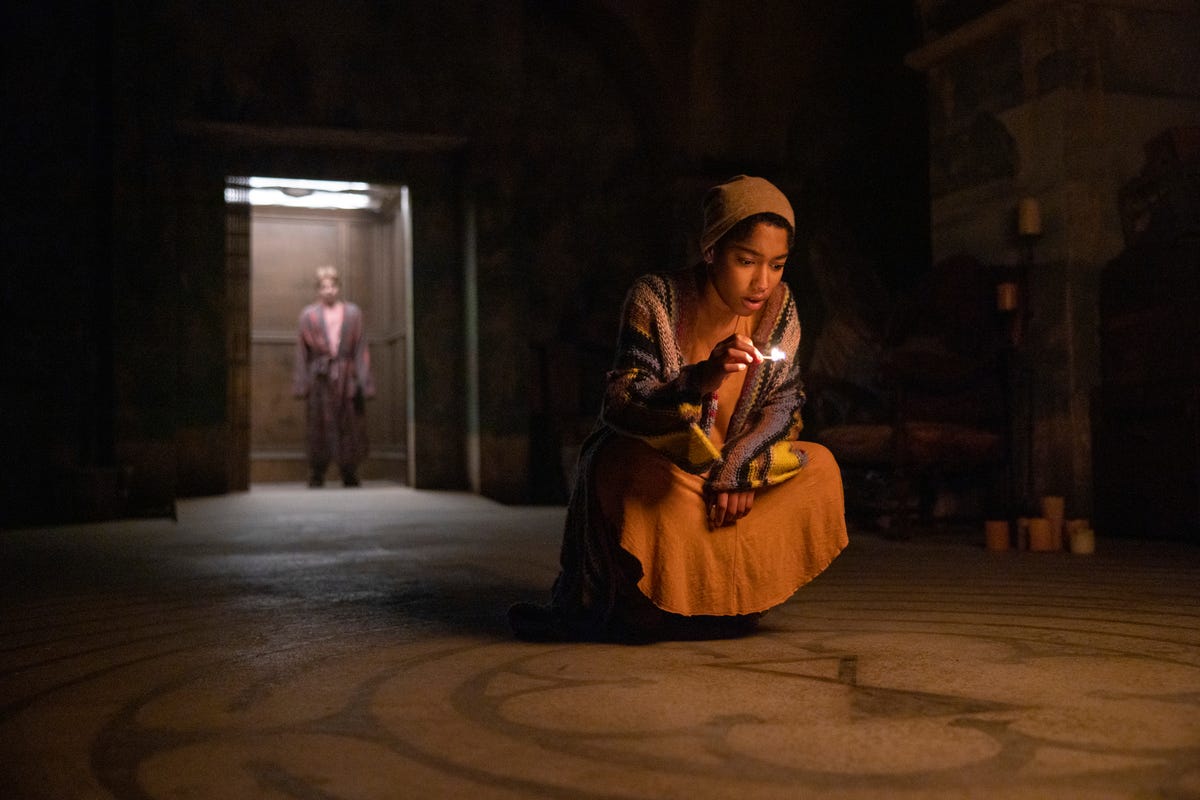
Igby Rigney as Kevin and Iman Benson as Ilonka in the creepy basement used by the Paragon cult.
Eike Schroter/Netflix
What exactly happened to Julia Jayne?
It should have come as no surprise that Shasta (sanskrit for “teacher”) — the all-too friendly founder of Good Humor Wellness, a naturopathic company sourcing ingredients around Brightcliffe — is really ex-Brightcliffe patient Julia Jayne.
Like Ilonka, Julia was also diagnosed with thyroid cancer in the throat as a teenager. She founded The Midnight Club in 1969, then later discovered Athena’s journal in the Brightcliffe library. She tracked down ex-Paragon cult leader Ballard by impersonating a hospice care nurse, visiting Ballard’s forwarding addresses from the mental institution until she found her.
Ballard, seeing Julia’s passion, agreed to let Julia stay with her for a week, during which she taught Julia the ways of the Paragon. She called Julia her “bright girl” — the same title Julia/Shasta gives Ilonka. Ballard and Julia spun a story around what really happened. In the police reports Ilonka reads, Julia disappeared from Brightcliffe for a week. She returned in full remission and said, “It was because of this place, that she found something here and it cured her.”
In Julia’s art therapy — kept in her Brightcliffe file — she wrote down the Dewey Decimal System numbers of where she hid Athena’s Paragon diary in the library, passing on the information as Ballard did for her. According to Stanton, Julia’s initial recovery comes down to simple, unlikely luck — not the secrets Ballard gave her. Julia returns to Brightcliffe as an adult to go through with the Paragon blood sacrifice ritual because she’s sick again.
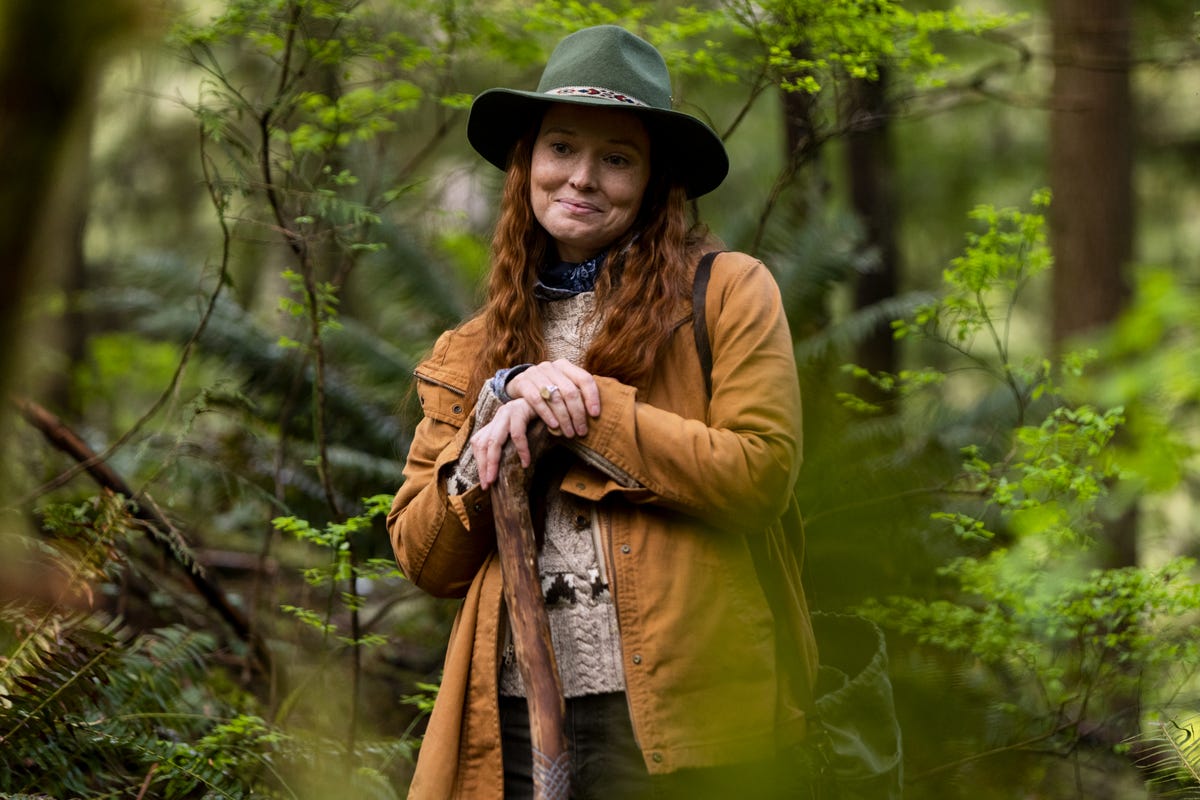
Samantha Sloyan plays the mysterious Shasta.
Eike Schroter/Netflix
What’s Dr. Stanton’s true identity?
Just when there’s a sense of acceptance and calm within Brightcliffe Hospice, Dr. Stanton reveals in the final cliffhanger scene that she — like many of the other cancer patients — is bald and wears a wig. Except, when she takes her wig off for the night, a tattoo of an hourglass can be seen on the back of her neck, just like Regina Ballard.
Is Dr. Stanton part of the Paragon cult?
Just like the many stories told in The Midnight Club, you can interpret the meaning behind Dr. Stanton’s appearance in multiple ways.
It’s pretty likely Stanton was once a believer in the Paragon’s methods, even if she doesn’t currently practice them. She was definitely aware of the Paragon, having acquired their books and teachings after purchasing the house. Maybe Stanton attempted to use the Paragon ritual on her sick son, Julian.
But Julian is apparently no longer alive, so the method didn’t work. In a conversation with Ilonka after Julia breaks in, Stanton labels the Paragon’s ways as “sick.” No longer a believer in the Paragon method, she hid her connections to the cult. Maybe she’s still bald because she too was diagnosed with an illness and has accepted that the only reason she’s still alive is thanks to luck. “The thing about Julia and other people I’ve met over the years is … they can’t accept that they were just lucky,” she tells Ilonka.
Maybe, after her son died, Stanton fostered genuine good intentions behind starting the hospice, providing a place where the terminally ill can “focus on living” while giving herself purpose in the process.
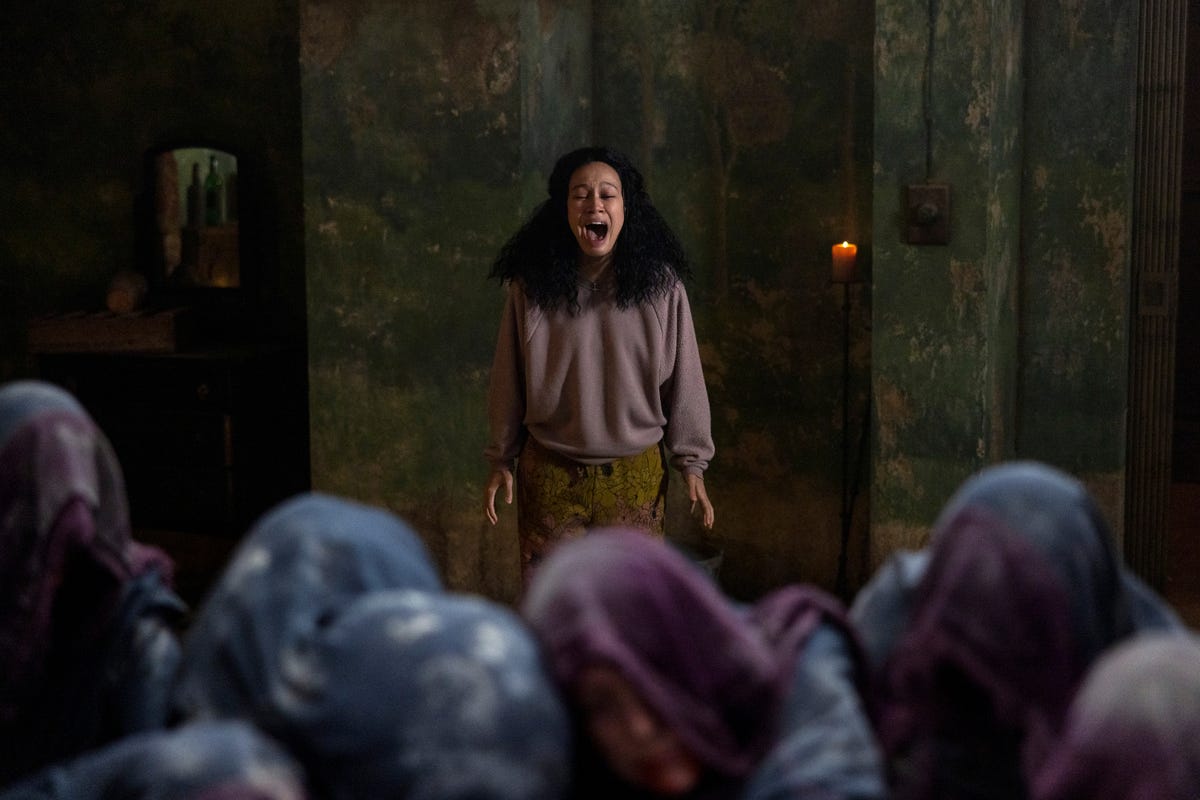
Sandra (Annarah Cymone) isn’t the only one to have ominous visions.
Eike Schroter/Netflix
Is Dr. Stanton good or bad?
There’s another way to look at Stanton’s intentions.
Despite everything Stanton has said about caring for her patients as a doctor, she might still be using the Paragon’s methods. Why else has she kept the basement in the same state as it was during the time of the commune? Maybe Julian is still alive in some form. To keep him alive, Stanton has been using the house and its special properties — that’s why she goes to great lengths to keep Julia and the new Paragon cult out of the picture.
In this reading, Stanton’s reason for founding Brightcliffe Hospice might have something to do with using the patients as sacrifices to the gods — or the ghosts.
Who are the old ghosts?
In the final cliffhanger scene, the camera pans across a framed newspaper clipping from 1898 in the Washington Journal. It includes a picture of industrialist Stanley Oscar Freelan and his wife, Vera Freelan, the original owners of the house. They look pretty darn similar to the two ghosts who haunt Ilonka and Kevin, named in the credits as The Mirror Man and Cataract Woman.
In this scene, Stanton listens to the same old song that plays whenever Ilonka travels back in time. The song — Come Where My Love Lies Dreaming — is composed by Stephen Foster and was published in 1855. The old newspaper clipping says that the New Freelan Estate was finished in mid-1898 and that it’s “truly a marvel of architecture.” (This contradicts Ilonka’s research — she says the house was built in 1901.) Maybe this musical connection is supposed to suggest that Stanton is far older than she appears and that her longevity has something to do with this “marvel” of a house.
Is Stanton feeding the Brightcliffe kids to the ghosts?
Another theory is Stanton might have some kind of deal with the resident ghosts. On the beach in episode 5, while celebrating Amesh outliving the day he was supposed to die, Natsuki speculates that Stanton started Brightcliffe to siphon off the patients’ life force into other vessels. Spence also points out that they don’t know where the bodies of ex-Brightcliffe kids go.
In episode 9, Ilonka says that the ghostly old woman with the cataracts “keeps talking about how she’s hungry, she’s starving.” Natsuki then shares that her mother told her a story about a “thing,” an “eater of years” or “the years eater” which looked like an old woman. It was found in places where people were going to die and it would eat the years they would have had. “This place would be a feast,” Natsuki says of Brightcliffe.
Maybe Natsuki’s right. Maybe Stanton really is feeding the Brightcliffe kids to the ghosts in exchange for some kind of benefit or life force for Julian.
Is ‘The Living Shadow’ Death?
Or could it be Julian?
Maybe Stanton managed to keep Julian alive thanks to the Paragon’s methods, but it came at a price: Julian now exists as a sort of in-between being. Both Anya and her ex-roommate Rachel talked about seeing The Living Shadow shortly before their deaths. The myth of The Living Shadow has been passed down through generations of The Midnight Club, its presence felt as long as there are patients around to potentially keep it and the other ghosts well fed.
Or maybe, in the end, the shadow really is the manifestation of the kids’ untimely ends.
Why does Ilonka have visions?
Is it because her medicine is making her “see stuff” as Kevin says in episode 3? Or is it because the house and its ghostly residents are calling to her? “I hear things. I see things. Those whispering voices … [are] practically screaming at me,” Ilonka tells Kevin. She initially thinks the voices are her own intuition spurring her to investigate Julia Jayne’s past, but maybe it’s really the ghosts reaching out to a new victim to feed on.
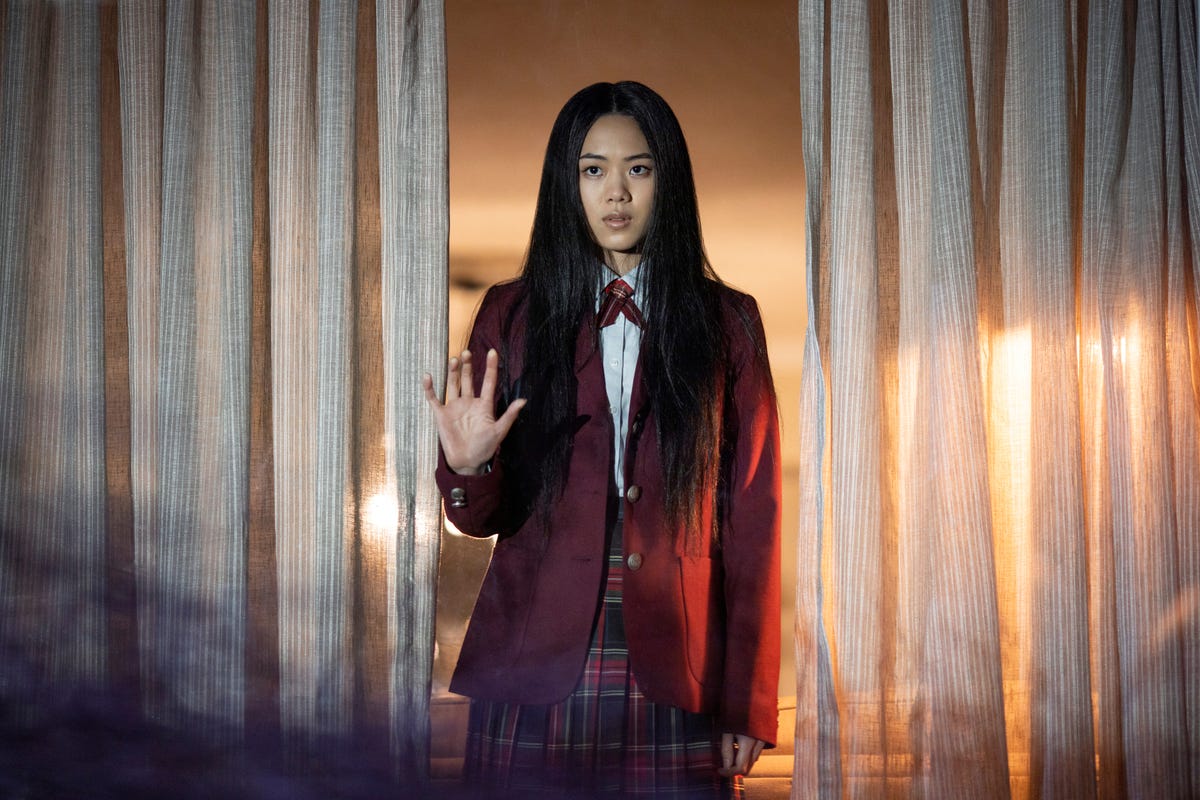
Natsuki (Aya Furukawa) in the first story we hear from The Midnight Club.
Eike Schroter/Netflix
Any Easter eggs?
You bet! Flanagan likes to pepper in satisfying Easter eggs throughout his shows and The Midnight Club — co-created with The Haunting of Bly Manor producer and writer Leah Fong — is no exception.
- The cool slanting graphic design of The Midnight Club’s title card looks to be inspired by Christopher Pike’s novel, aka the source material. One of the editions uses a similar font for the title on the front cover.
- The Lasser Glass, a possessed antique mirror that featured in Flanagan’s 2014 horror Oculus, can be seen in the basement room in episode 4 a bit over a minute in, partially hidden under a cloth cover. This Easter egg also appears in Flanagan’s 2021 horror series Midnight Mass.
- This isn’t really an Easter egg, but a fun fact: Episode 1 of The Midnight Club broke the Guinness World Record for “most scripted jump scares in a single television episode” with 21 instances of the classic horror trope.
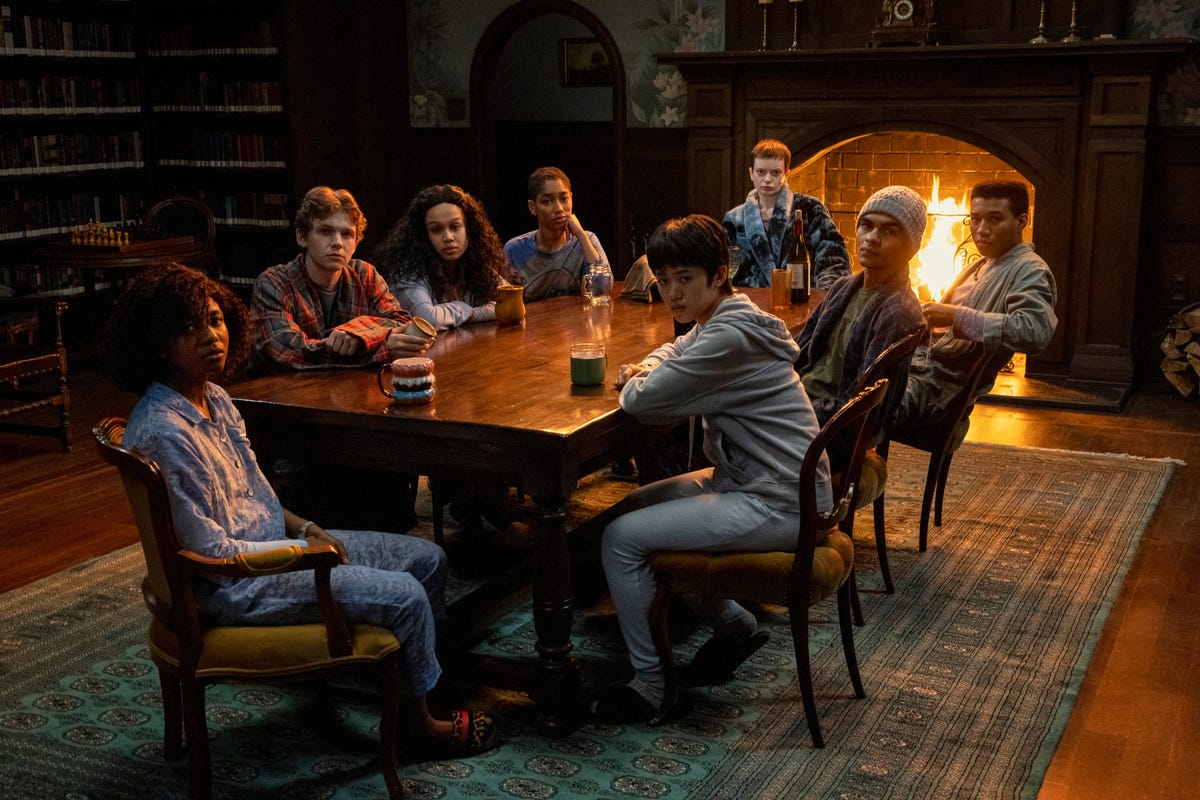
The Midnight Club convening in the library.
Eike Schroter/Netflix
Is The Midnight Club based on a true story?
Yes! The story of The Midnight Club is based on Christopher Pike’s young adult novel of the same name. The stories the members of The Midnight Club tell each other are drawn from Pike’s other novels, including The Wicked Heart, Gimme a Kiss, See You Later, Witch, Road to Nowhere and The Eternal Enemy.
Pike drew inspiration for The Midnight Club from a true story. In 1993, a young cancer patient asked him to write a story about her and the kids in her ward, who had started a “Midnight Club.” “They would meet at midnight and discuss my books,” Pike said in a Netflix press release. Pike gave Ilonka Pawluk a Polish name in honor of the young patient, who also had a Polish name. Unfortunately, despite his best efforts, Pike was unable to finish the book before she died.
Is Brightcliffe Hospice a real place?
The Brightcliffe house itself doesn’t actually exist. While a portion of the house’s facade was set up on the filming site in Pitt Meadows, Vancouver, the majority of the exterior was created through VFX magic. According to a Netflix press release, the Zoic Studios effects team scanned a house in Maine as the VFX basis for Brightcliffe’s gothic exterior.
Movies Coming in 2022 From Marvel, Netflix, DC and More
[ad_2]
